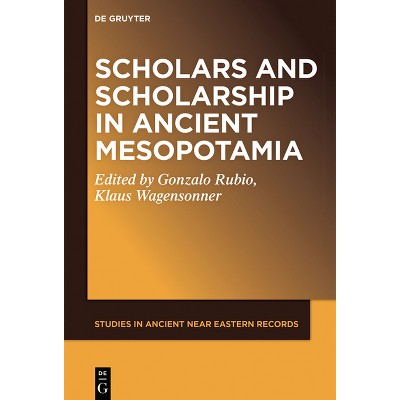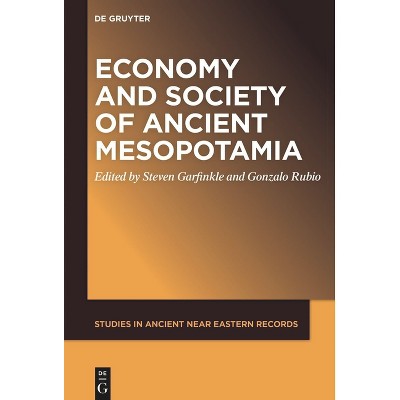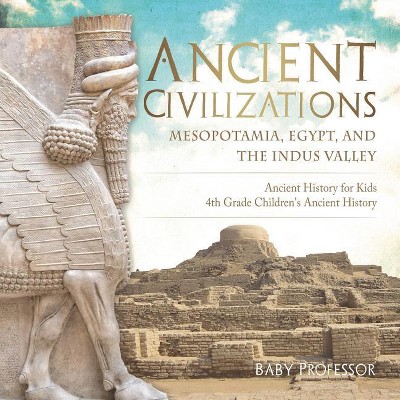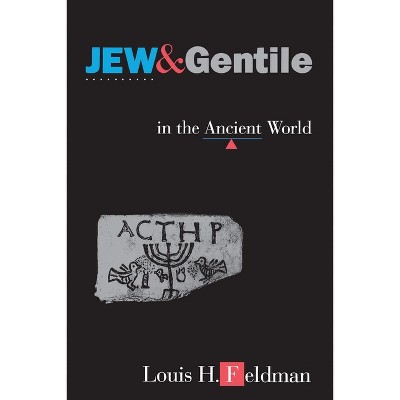Sponsored

Remembering and Forgetting in Ancient Mesopotamia - by Marian H Feldman (Hardcover)
$55.00
Pre-order
Eligible for registries and wish lists
Sponsored
About this item
Highlights
- A study of how our understanding of Akkadian history has been shaped by subsequent dynasties.
- About the Author: Marian H. Feldman is the W. H. Collins Vickers Chair in Archaeology and holds a joint appointment in the Departments of the History of Art and Near Eastern Studies at Johns Hopkins University.
- 184 Pages
- Art, History
Description
About the Book
"A study of how our understanding of Akkadian history has been shaped by subsequent dynasties. In this innovative new study of ancient Mesopotamian art and architecture, Marian H. Feldman examines the complex legacy of the Akkadian dynasty, which spanned ca. 2350-2150 BCE in the region now known as southern Iraq. The Akkadian state played an essential role in the formation and expression of subsequent political entities in the region, yet our understanding of this period is based primarily on the historical lens of their successors, in particular the rulers of the Third Dynasty of Ur (ca. 2100-1000 BCE). Focusing on four remaining ziggurats in Ur, Eridu, Uruk, and Nippur, as well as surviving statues and steles, Feldman examines how the Ur III rulers selectively curated and erased Akkadian structures and monuments to serve their own political ambitions. Analyzing the archaeological evidence of Ur III building practices and the display of Akkadian royal sculpture, she considers the role of sacred spaces in our knowledge of the period and imagines how the cultivation of the Akkadian narrative helped the Ur III dynasty centralize its power. In so doing, this book proposes a new way to understand the impact of the survival-or erasure-of architectural and artistic remains on collective and historical memory"--Book Synopsis
A study of how our understanding of Akkadian history has been shaped by subsequent dynasties. In this innovative new study of ancient Mesopotamian art and architecture, Marian H. Feldman examines the complex legacy of the Akkadian dynasty, which spanned ca. 2350-2150 BCE in the region now known as southern Iraq. The Akkadian state played an essential role in the formation and expression of subsequent political entities in the region, yet our understanding of this period is based primarily on the historical lens of their successors, in particular the rulers of the Third Dynasty of Ur (ca. 2100-1000 BCE). Focusing on four remaining ziggurats in Ur, Eridu, Uruk, and Nippur, as well as surviving statues and steles, Feldman examines how the Ur III rulers selectively curated and erased Akkadian structures and monuments to serve their own political ambitions. Analyzing the archaeological evidence of Ur III building practices and the display of Akkadian royal sculpture, she considers the role of sacred spaces in our knowledge of the period and imagines how the cultivation of the Akkadian narrative helped the Ur III dynasty centralize its power. In so doing, this book proposes a new way to understand the impact of the survival--or erasure--of architectural and artistic remains on collective and historical memory.Review Quotes
"At the end of the third millennium BC, the rulers of Ur took a highly selective approach to the build legacy of their Akkadian predecessors' dynasty, preserving certain ziggurats, statues and steles while systematically destroying others, as this book explores."
-- "Apollo, "Off the Shelf" column""Feldman's scholarship is impeccable as she grapples with the full range of existing literature, including archaeological reports, theoretical approaches, and relevant text extracts. Feldman considers how the Ur III kings exploited Akkadian traditions to legitimize their aspirations, offering new and original elements to the discussion by underlining physical aspects and introducing the concept of the 'charisma of materiality.' The result is an impressive and compelling piece of research."--Allison Thomason, Southern Illinois University Edwardsville
"How did the rulers of the Ur III empire maintain, adjust, or erase the memory of their Sargonic predecessors, and how did that curated memory express itself in architecture and the display of royal statuary? Considering such questions, Feldman eloquently demonstrates that material culture has its own intriguing voice in writing a history of this crucial period."--Niek Veldhuis, University of California, Berkeley
"Feldman convincingly argues that the Akkadian period has been described as memorable precisely because of the efforts of Ur III rulers to preserve it in a reshaped form. She successfully weaves together several different methodologies--including archaeological analysis of stratigraphy, art historical analysis of architecture, materiality, and form, and literary or textual analyses--and supports them with careful step-by-step arguments. Original and meticulously researched, Remembering and Forgetting in Ancient Mesopotamia adds novel and important contributions to the study of the Mesopotamian past."--Augusta McMahon, The University of Chicago
About the Author
Marian H. Feldman is the W. H. Collins Vickers Chair in Archaeology and holds a joint appointment in the Departments of the History of Art and Near Eastern Studies at Johns Hopkins University. She is the author of Diplomacy by Design: Luxury Arts and an "International Style" in the Ancient Near East, 1400-1200 BCE and Communities of Style: Portable Luxury Arts, Identity, and Collective Memory in the Iron Age, both published by the University of Chicago Press.Dimensions (Overall): 9.0 Inches (H) x 6.0 Inches (W)
Weight: 1.0 Pounds
Suggested Age: 22 Years and Up
Number of Pages: 184
Genre: Art
Sub-Genre: History
Publisher: University of Chicago Press
Theme: Ancient & Classical
Format: Hardcover
Author: Marian H Feldman
Language: English
Street Date: January 21, 2026
TCIN: 1006060622
UPC: 9780226842851
Item Number (DPCI): 247-32-6185
Origin: Made in the USA or Imported
If the item details aren’t accurate or complete, we want to know about it.
Shipping details
Estimated ship dimensions: 1 inches length x 6 inches width x 9 inches height
Estimated ship weight: 1 pounds
We regret that this item cannot be shipped to PO Boxes.
This item cannot be shipped to the following locations: American Samoa (see also separate entry under AS), Guam (see also separate entry under GU), Northern Mariana Islands, Puerto Rico (see also separate entry under PR), United States Minor Outlying Islands, Virgin Islands, U.S., APO/FPO
Return details
This item can be returned to any Target store or Target.com.
This item must be returned within 90 days of the date it was purchased in store, shipped, delivered by a Shipt shopper, or made ready for pickup.
See the return policy for complete information.
Frequently bought together

$16.78 - $20.97
MSRP $21.00 - $30.00
4.8 out of 5 stars with 4 ratings













